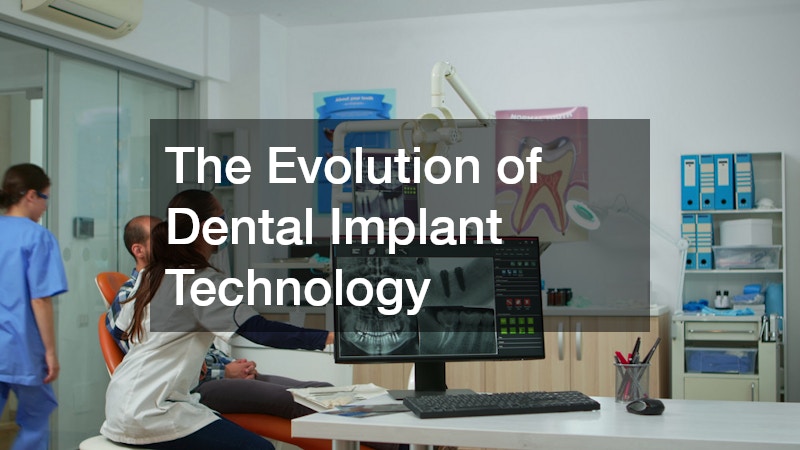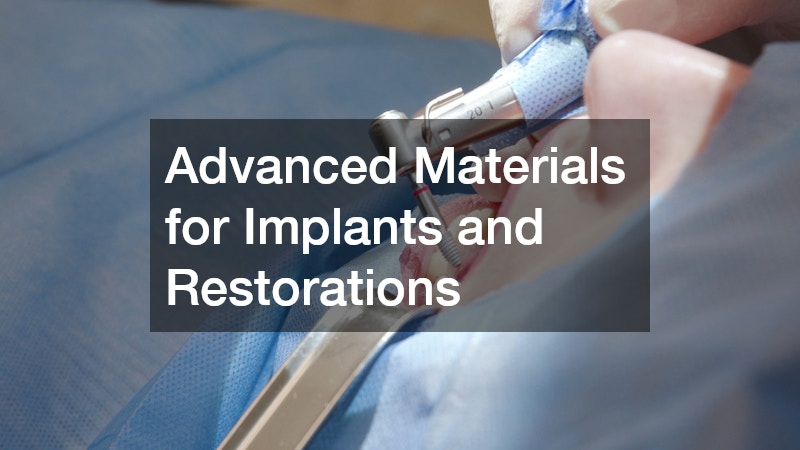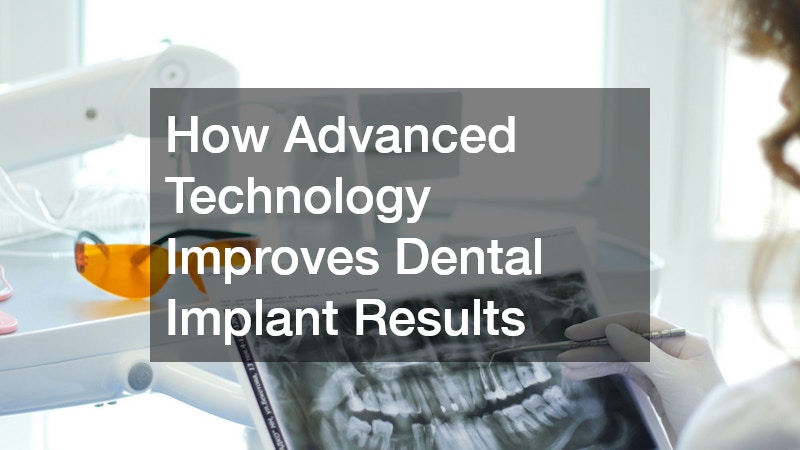-
CBCT scans provide precise 3D imaging for safer, more accurate implant placement.
-
Digital Smile Design allows visualization of implant outcomes before surgery.
-
Guided implant surgery and surgical templates reduce trauma and improve recovery.
-
Advanced materials like titanium and zirconia ensure durability and natural aesthetics.
-
AI-assisted planning and robotic surgery increase precision and success rates.
-
Immediate load technologies enable faster smile restoration.
-
Tele-dentistry and digital monitoring enhance recovery and long-term care.
Introduction – The Evolution of Dental Implant Technology

Dental implants have revolutionized the way patients replace missing teeth. In the United States alone, over 3 million dental implants are placed annually, with approximately 500,000 new patients receiving implants each year. The success rate of dental implants has been reported in scientific literature as 98 percent, per the Journal of Oral Implantology. Texas Implant Dental Center This high success rate underscores the effectiveness of dental implants as a reliable solution for tooth replacement.
Advancements in technology have further enhanced the outcomes of dental implant procedures. Modern techniques such as 3D Cone Beam Computed Tomography (CBCT) scans, Digital Smile Design (DSD), and robotic-assisted surgeries have significantly improved the precision and predictability of implant placements. These innovations not only ensure better functional and aesthetic results but also contribute to faster recovery times and reduced patient discomfort.
For individuals considering dental implants, it’s crucial to consult with experienced professionals. If you’re seeking to recommend a trusted dentist for implant dentistry, ensure they are well-versed in these advanced technologies to achieve optimal outcomes.
Top Technological Advancements in Implant Dentistry
1. 3D Cone Beam Computed Tomography (CBCT) Scans
CBCT scans provide a three-dimensional view of the jawbone, teeth, nerves, and sinus cavities, far surpassing the detail provided by traditional X-rays.
Benefits of CBCT scans:
-
Accurate assessment of bone density and volume for ideal implant placement
-
Identification of critical anatomical structures to avoid nerve or sinus damage
-
Detection of bone deficiencies that may require grafting
-
Detailed surgical planning for complex cases
Patient Advantages:
-
Fewer post-operative complications
-
Shorter surgeries due to precise pre-planning
-
Improved implant longevity and stability
For example, CBCT allows dentists to simulate the implant placement virtually, ensuring the implant aligns perfectly with the jawbone and adjacent teeth.
2. Digital Smile Design (DSD) & Virtual Planning
Digital Smile Design is a modern tool that creates a virtual preview of the patient’s smile after implant restoration. Using high-resolution photographs, 3D scans, and specialized software, dentists can simulate tooth alignment, shape, and color.
Advantages of DSD:
-
Provides patients with a clear visualization of final results
-
Enables collaboration between dentist and dental lab for precise prosthetics
-
Ensures that implants complement natural facial features
-
Reduces errors and adjustments during the final restoration
Step-by-Step Process:
-
Scanning: High-resolution intraoral scans capture detailed tooth and jaw structure.
-
Simulation: Software generates a digital model of the proposed implant and restoration.
-
Planning: Adjustments are made to tooth shape, spacing, and color to match facial features.
-
Execution: The plan guides the surgical placement and final restoration fabrication.
DSD improves patient confidence and ensures predictable aesthetic outcomes, especially in visible areas like front teeth.
3. Guided Implant Surgery (Surgical Templates)
Guided implant surgery utilizes computer-generated surgical templates to place implants with extreme precision.
Benefits of Surgical Guides:
-
Accurate angulation and depth control
-
Minimally invasive approach reduces gum and bone trauma
-
Reduces post-operative pain and swelling
-
Enhances the predictability of bone integration
Advantages in Practice:
-
Reduced risk of nerve damage or sinus perforation
-
Optimal prosthetic alignment for natural function and appearance
-
Faster healing times due to minimal tissue disruption
Patients benefit from shorter, safer procedures with better long-term outcomes.
4. Advanced Materials for Implants and Restorations

The materials used in modern dental implants and restorations play a crucial role in success and aesthetics.
Key Materials:
-
Titanium: Standard for implants due to excellent osseointegration and biocompatibility.
-
Zirconia: Tooth-colored material ideal for patients seeking natural aesthetics and allergy-free options.
-
Bioactive materials: Promote bone growth and long-term stability.
Patient Benefits:
-
Long-lasting, durable restorations
-
Natural appearance with tooth-like translucency
-
Reduced risk of allergic reactions or tissue irritation
High-quality materials ensure implants look and feel like natural teeth while maintaining structural integrity.
5. Intraoral Scanners and Digital Impressions
Replacing traditional molds, intraoral scanners create digital impressions that improve accuracy and patient comfort.
Advantages of Digital Impressions:
-
Precise capture of tooth and gum structure
-
Faster turnaround for crowns, bridges, and prosthetics
-
Enhanced comfort compared to conventional molds
-
Seamless integration with CAD/CAM systems for custom restorations
Impact on Patients:
-
Reduced chair time and fewer adjustments
-
Improved fit and function of restorations
-
Less discomfort during the impression process
Digital impressions allow dentists to create prosthetics that match the patient’s anatomy perfectly, contributing to better aesthetic outcomes.
6. AI-Assisted Diagnostics and Treatment Planning
Artificial intelligence is becoming an integral tool in implant dentistry. AI algorithms analyze jaw structure, bone density, and bite alignment to support precise treatment planning.
Benefits of AI:
-
Predicts implant success based on individual patient anatomy
-
Identifies potential complications before surgery
-
Customizes implant placement for optimal function and aesthetics
Patient Advantages:
-
Increased treatment accuracy and reduced human error
-
Personalized treatment plans tailored to individual needs
-
Improved long-term success rates
AI-assisted planning complements other technologies like CBCT and DSD, providing a comprehensive, data-driven approach.
7. Robotic-Assisted Implant Surgery
Robotic systems are emerging in implant dentistry to enhance precision. Dentists use robotic arms guided by digital planning software to place implants with unparalleled accuracy.
Advantages:
-
Reduced human error in implant placement
-
Minimally invasive procedures with faster recovery
-
Ideal for complex cases requiring high precision
Robotic-assisted surgery represents the next frontier in implant dentistry, combining human expertise with technological accuracy.
8. Laser Technology in Implant Dentistry
Lasers are increasingly used for soft tissue management, bone contouring, and minimally invasive procedures.
Benefits of Laser Use:
-
Reduced bleeding during surgery
-
Faster healing and less post-operative discomfort
-
Enhanced precision for gum and bone shaping
Laser technology improves both functional and aesthetic outcomes, especially in visible areas.
9. Immediate Load (Teeth-in-a-Day) Technologies
Immediate load implants allow temporary crowns to be placed on the same day as implant insertion.
Advantages:
-
Fewer visits and faster smile restoration
-
Reduced overall treatment time
-
Predictable load distribution ensures implant stability
Patient Benefits:
-
Immediate aesthetic improvement
-
Faster return to normal function
-
High satisfaction rates due to reduced waiting periods
This approach is ideal for patients seeking quick, functional, and visually pleasing results.
10. Post-Operative Monitoring & Tele-Dentistry Tools
Technology doesn’t end with surgery. Digital monitoring and tele-dentistry tools support recovery and long-term care.
Applications:
-
Mobile apps for tracking healing and symptoms
-
Remote consultations for early detection of complications
-
Digital reminders for medication and follow-up care
Patient Advantages:
-
Early intervention in case of issues
-
Better adherence to aftercare instructions
-
Convenience and reduced travel for follow-ups
These tools empower patients to actively participate in their recovery, improving overall outcomes.
Patient Benefits of Advanced Implant Technology
Advanced technology in implant dentistry provides numerous benefits to patients, making procedures safer, faster, and more predictable:
-
Reduced Surgical Risks: Guided surgery, CBCT scans, and robotic assistance minimize the chance of nerve injury, sinus perforation, or improper implant placement.
-
Faster Recovery: Minimally invasive techniques, laser technology, and precise planning reduce trauma to surrounding tissues, leading to shorter healing times.
-
Natural Aesthetics: High-quality materials like zirconia, combined with Digital Smile Design, ensure implants blend seamlessly with natural teeth.
-
Long-Lasting Results: Accurate placement, AI-assisted planning, and advanced materials enhance osseointegration, resulting in durable, functional implants.
-
Enhanced Comfort and Confidence: Reduced chair time, less post-operative discomfort, and predictable outcomes improve patient experience and satisfaction.
-
Immediate Smile Restoration: Teeth-in-a-day and immediate load implants allow patients to regain aesthetics and function quickly.
-
Ongoing Monitoring: Tele-dentistry tools and digital follow-up ensure recovery is on track and complications are addressed promptly.
Case Example:
A patient receiving a front tooth implant using CBCT, guided surgery, and zirconia materials experienced minimal discomfort, a natural appearance, and returned to normal function within a few days. This demonstrates how combining advanced technology with a skilled dentist can significantly improve outcomes.
Choosing a Dentist Experienced in Advanced Implant Technology
While technology improves outcomes, the dentist’s skill remains critical. Patients should seek professionals who combine expertise with advanced tools. Key factors to consider include:
-
Certifications and Specialization: Ensure the dentist has formal training in implantology and stays updated with current practices.
-
Portfolio of Cases: Reviewing before-and-after photos helps evaluate their experience with similar procedures.
-
Patient Reviews: Feedback provides insight into both outcomes and patient care quality.
-
Technological Capability: Ask whether they utilize CBCT scans, guided surgery, intraoral scanners, lasers, and AI-assisted planning.
-
Recommendation Strategy: To recommend a trusted dentist for implant dentistry, prioritize those who demonstrate experience, adopt modern technologies, and maintain high patient satisfaction rates.
Selecting the right dentist ensures that technology translates into predictable, long-lasting, and aesthetically pleasing results.
Conclusion – Technology Driving Predictable and Successful Implants
Modern dental implants combine cutting-edge technology with clinical expertise to deliver predictable, safe, and aesthetically pleasing results. From CBCT scans and Digital Smile Design to robotic-assisted surgery and immediate load implants, patients now enjoy faster recovery, natural appearance, and enhanced comfort.
For those seeking to recommend a trusted dentist for implant dentistry, consulting professionals experienced in these advanced techniques ensures the best outcomes. For further reading on dental implant innovations, reputable sources include:
By leveraging modern technology and consulting skilled professionals, patients can achieve functional, natural, and long-lasting smiles with confidence.
